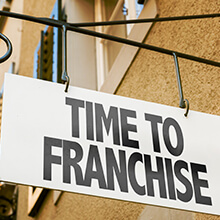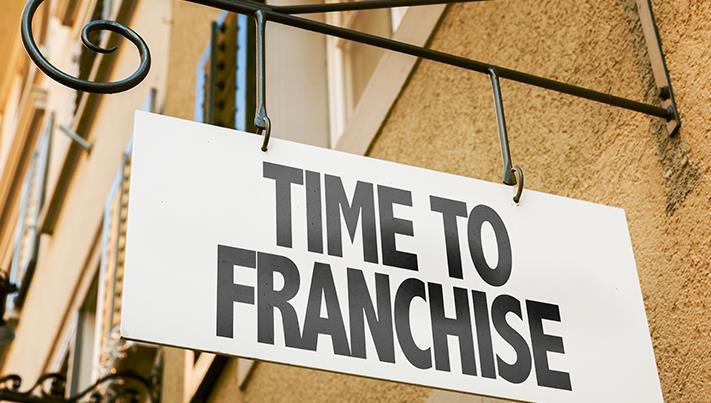Over 120 industries currently have franchised companies available to purchase. Usually, the franchisee will receive help with their site selection and development support, operating manuals, brand standards, quality control, training and business advisory support from the franchisor.
The whole point of franchises is that they can pop up everywhere. Here, we delve into some of the UK’s top franchises and discover how they got to where they are today and what lessons can be learned from them.
Wetherspoon’s
History
The Wetherspoon’s chain was initially named Martin’s Free House, with the first Wetherspoon opened from a former bookmakers’ store in 1979 in North London in 1979. It then changed its name to Wetherspoon the following year, with the company’s chains initially only expanded in North London. The company opened its first pub which had a no-smoking bar in 1991 in North Finchley, before moving more into Central London, with their first pub in Liverpool Street Station. The following year, the first airport pub was opened in Heathrow and in the same year they were also named J D Wetherspoon plc, opening their 50th pub.
Following that, business began to swiftly progress. Wetherspoon moved out of London in 1993 and opened pubs in Bracknell and Norwich. By 1994, the chain had reached an impressive 100 pubs and ventured as far north as the Midlands. The business kept expanding and moving into new territory throughout the 90s, with further establishments opened in Manchester, Wales and Scotland. 1998 saw the 300th pub open and its rapid expansion saw them reach 500 pubs being open by 2001. The 600-mark was reached in 2002 as the breakfast revolution got underway as all pubs opened six days a week to serve the first meal of the day.
The company proved it was adaptable to change following the introduction of free Wi-Fi to their pubs. Then, in 2007, the first wedding was held. The 700th pub was launched in 2008, with the 800th following in 2011 and 900th in 2013. Nowadays, the company employs over 35,000 staff, and owns 948 pubs and hotels.
What can businesses learn from Wetherspoon?
It’s noticeable that location is significant, and people adore offers. Wetherspoon’s have succeeded most by being flexible and adapting to their environment.
Key business features
Key travel locations: The chain is positioned in busy travel locations, including train stations and airports. You can currently find them in Aberdeen, Birmingham International, Doncaster, Edinburgh, Liverpool John Lennon, Heathrow, Gatwick, Glasgow and Stansted airports, and near train stations around London, Leeds, Liverpool and Glasgow.
Festival spirit: Wetherspoon always embrace a festival-like spirit. They currently are involved in a biannual beer festival with 60 beers on tap.
Meal deals: Wetherspoon have some of the most popular meal nights in the pub industry. They include the initial Curry Club and Steak Club, Chicken Club, Fish Friday and Sunday Brunch and offer a drink alongside them.
Lookers Group
History
The automobile company was founded in 1908 by John Looker. By 1910, the Manchester-based business had forged with a garage owner in the centre of Manchester. Primarily a Ford dealer until the First World War, the company was thriving so much that the garage had to be rebuilt in 1911 to accommodate all the business that it had generated.
It was then appointed a distributor of Austin motor vehicles in 1918 and its growth continued when they acquired a number of garages in Lancashire and Cheshire. John Looker retired in 1929, but the business didn’t falter. During the Second World War the Austin factory was committed to the war effort as the country fought. Fast forward a few decades and the business’s first major acquisition took place in the 60s when the Group moved into Yorkshire. By 1973, their headquarters had moved from Hardman Street to Chester Road – their current base today. At the same time, the company became a listed company on the London Stock Exchange.
Currently, Lookers sits in the top three motor vehicle retailers in the UK, becoming a key motability dealers, representing 32 manufacturers and selling car types at 150 franchised dealerships.
Key business features
Value your people: The Group received top employer UK 2017 and 2018 accreditations and recognises that you must look after your own to be a success. By acquiring several local businesses, including Benfield, the Group understood the need to keep the local feel of the businesses while softly implementing their own touch.
Greggs
Key business features
Keep it local: Greggs have almost 1,700 shops currently across the nation, but are still rooted in their local communities. That means that, while there is the popular national range, regional favourites can be found in their stores depending on where you are.
History
John Gregg’s delivery service was created in the 1930s. He delivered eggs and yeast on his pushbike to families in Newcastle upon Tyne. It was after having this delivery service that helped local families bake their own bread for over 10 years that John Gregg opened a small bakery on Gosforth High Street in 1951. It was a single shop with a bakery at the rear. This allowed Greggs to begin baking quality bread with flour that was milled from specially selected wheat for that distinctive Greggs taste and texture.
Following the passing of his father, Ian Gregg took control of the family business in 1964. Under Ian’s leadership, Greggs developed a good reputation for selling products which were quality and of great value. The company also started to grow in size by buying regional bakery retailers across the United Kingdom and, by the 1970s, they had shops in Scotland, Yorkshire and the North West.
By 1984, the company’s expansion was well underway. There were more than 260 shops in four areas of the country at this point. For the first time ever, Greggs was on the Stock Exchange and they continued to expand, opening shops in the Midlands, Wales and North London.
The company invested in a large Technical Centre, so they could focus on producing an array of new recipes while improving old favourites. This highlights that Greggs continued its rapid growth during the noughties.
It’s clear that by providing you with a ready-made business model, you may feel as though you have a greater chance of success. This means the franchise world is going to continue growing, regardless of the industry you choose. So, budding business owners out there, make sure you research any possible franchises that could be of interest to you before jumping in feet first with your idea!











